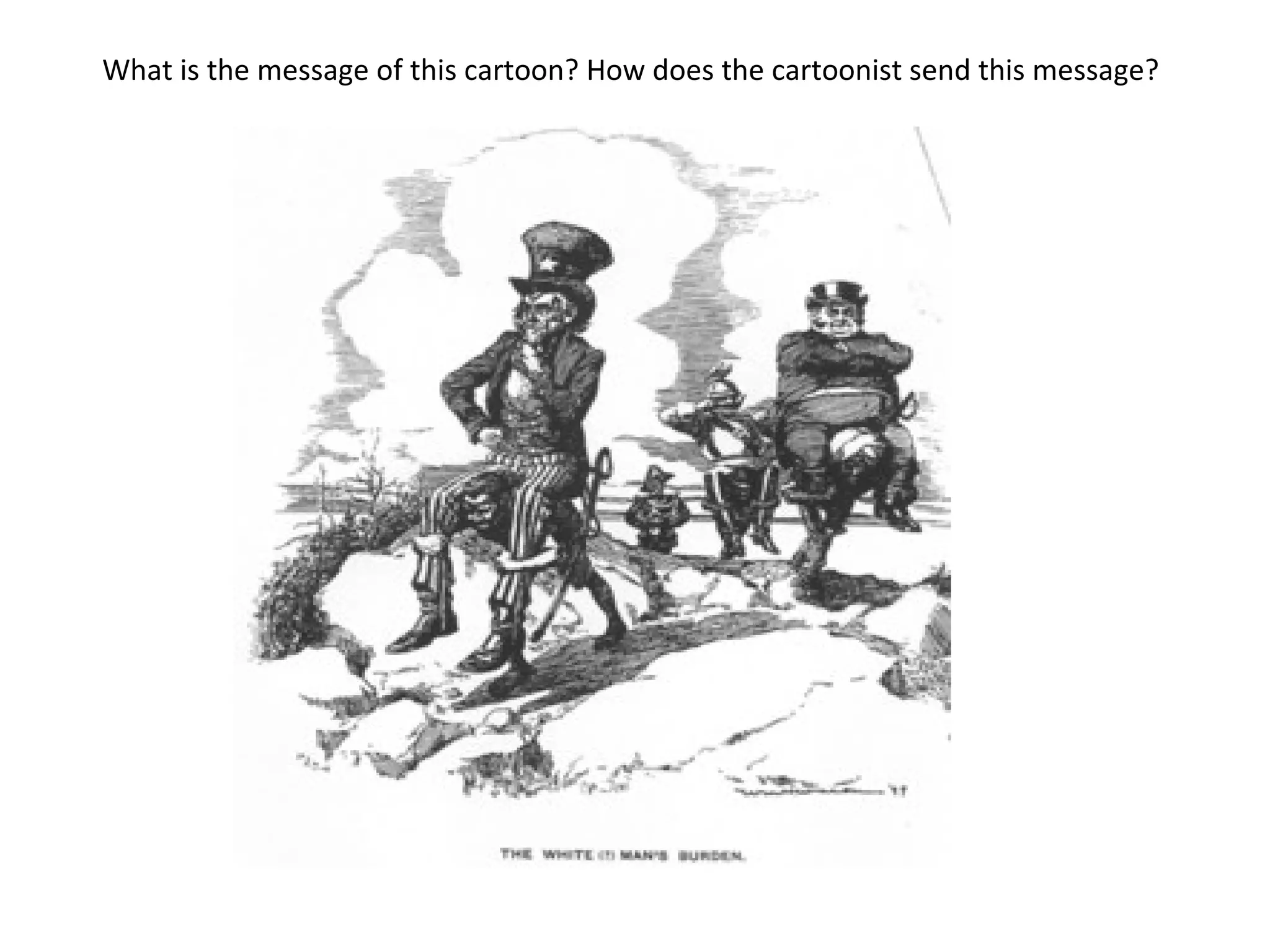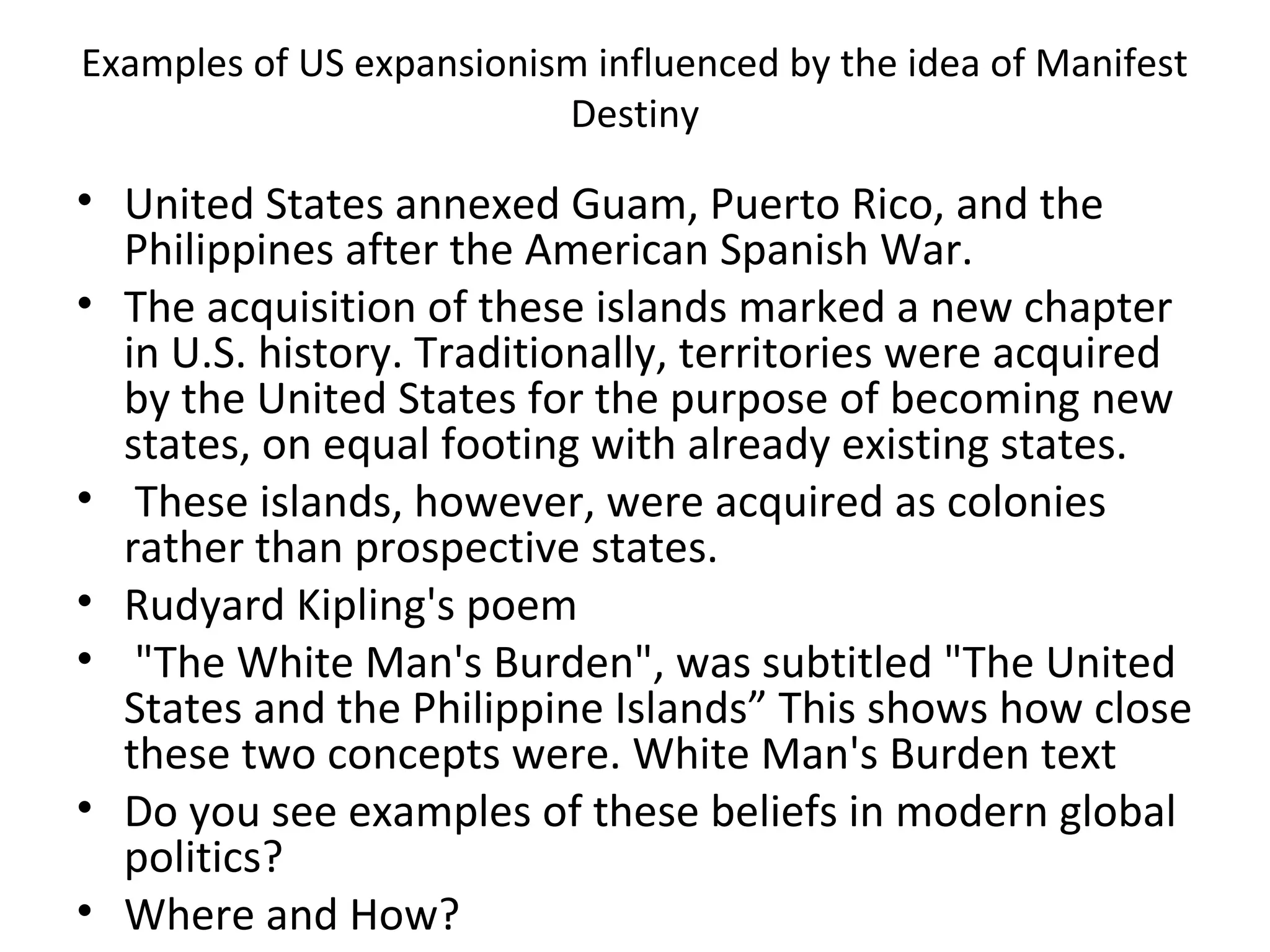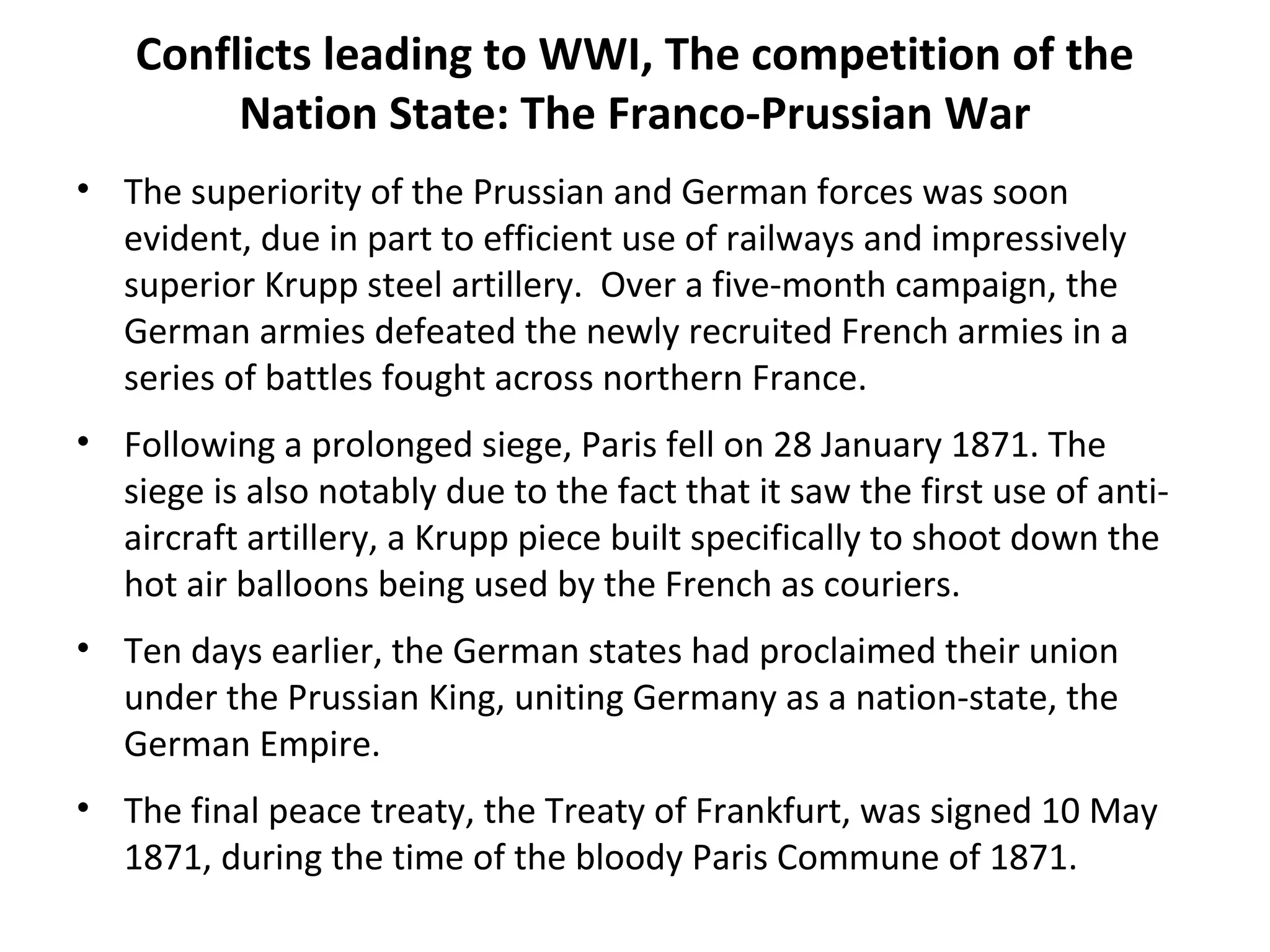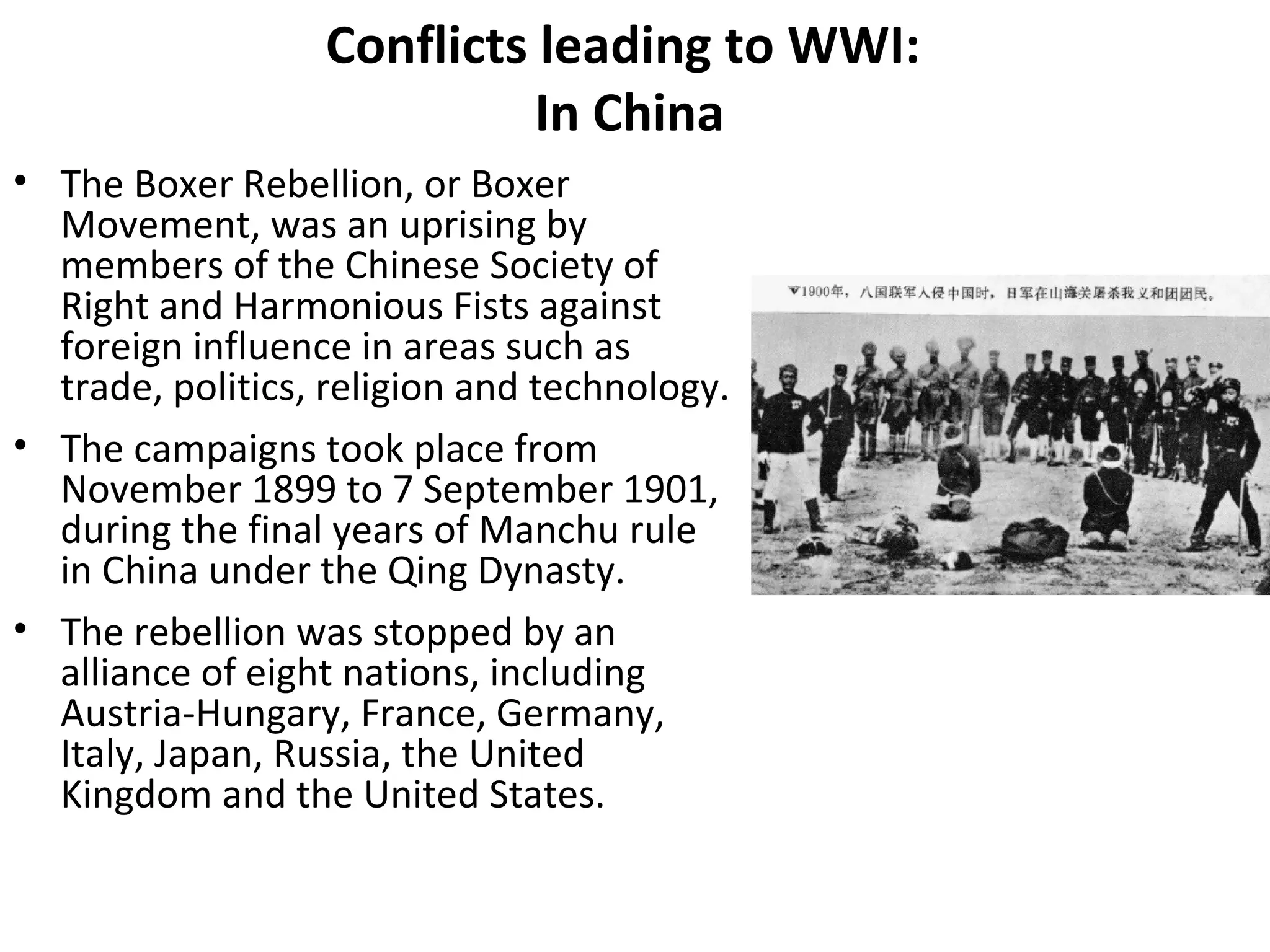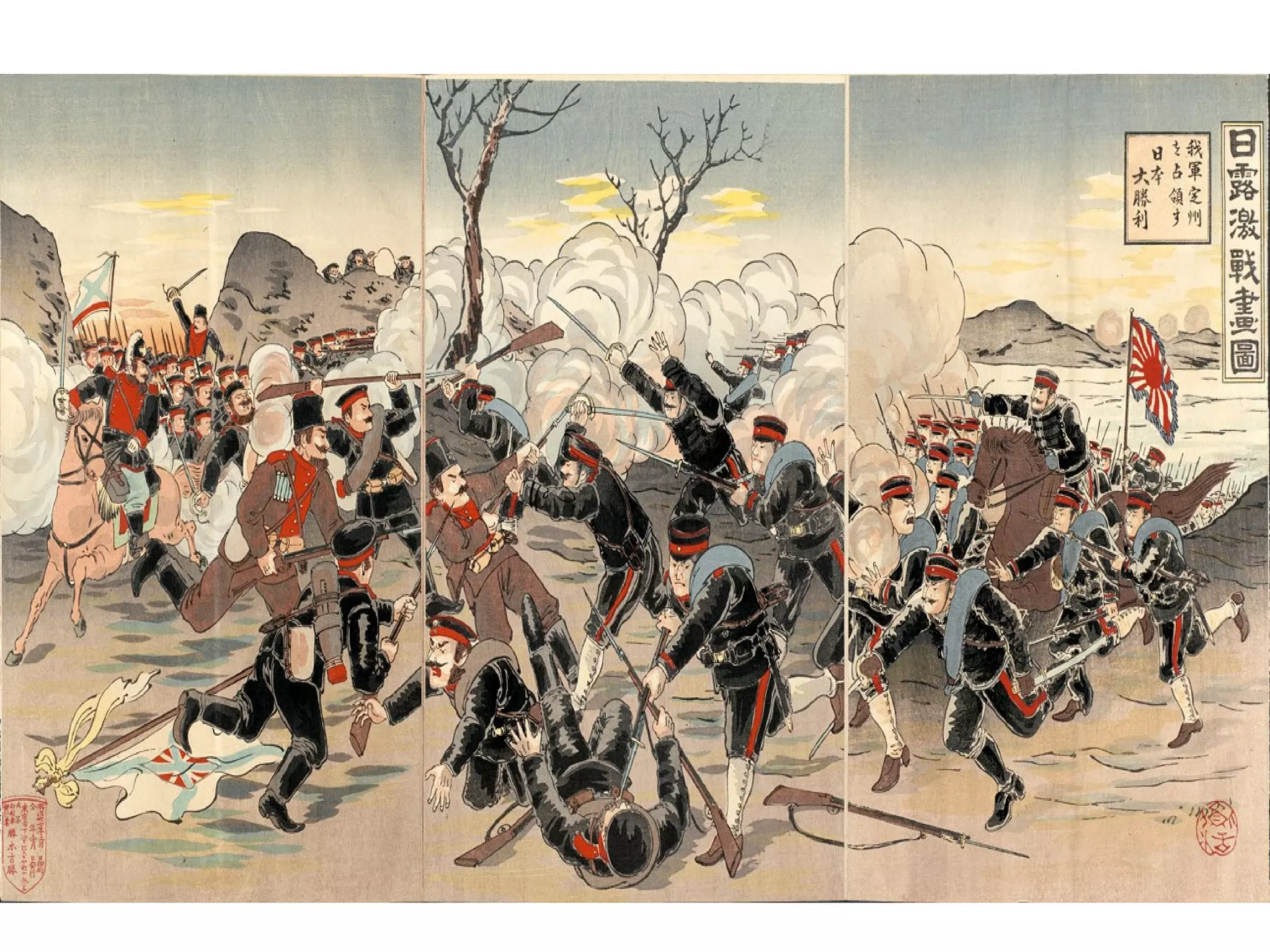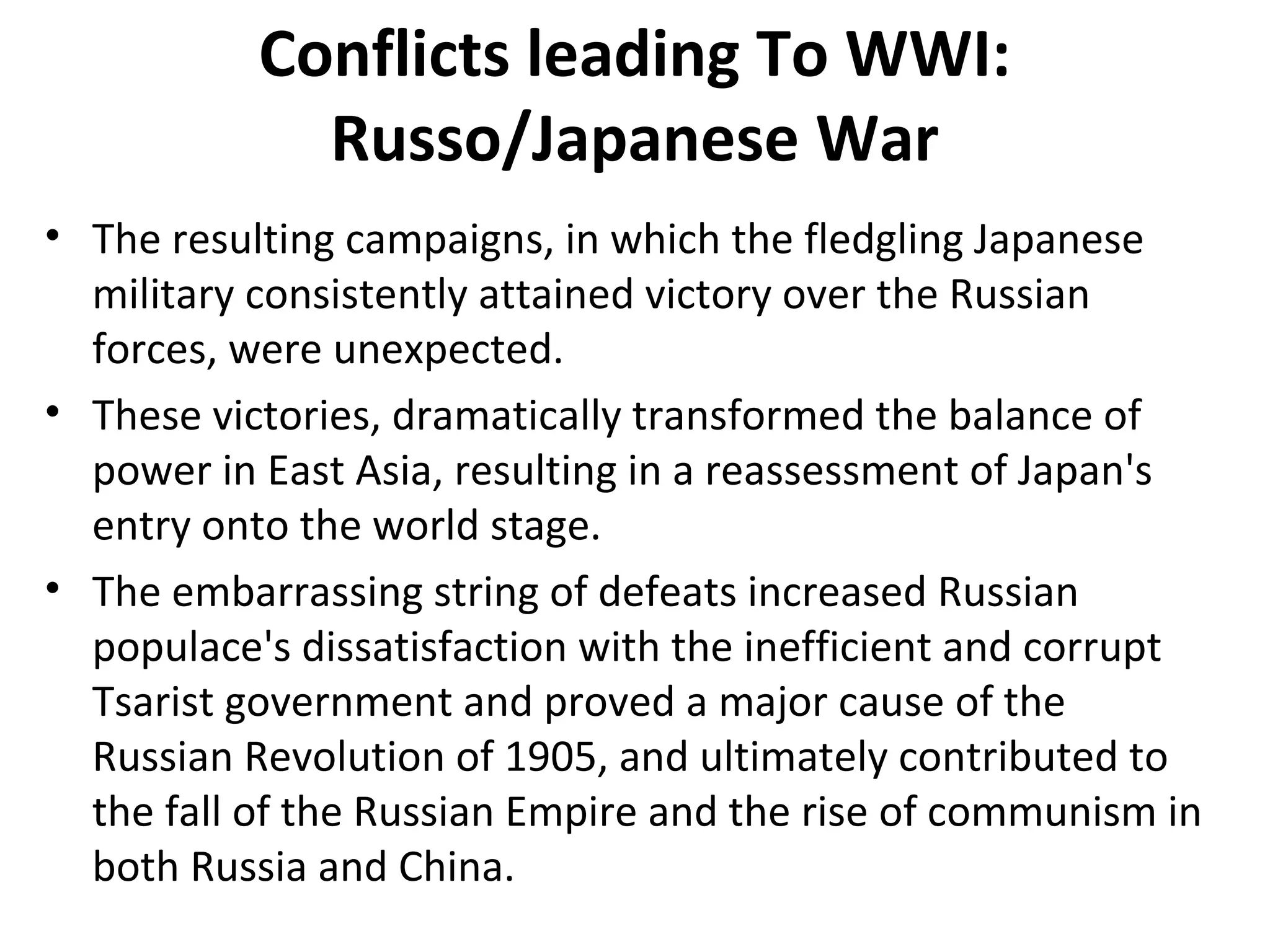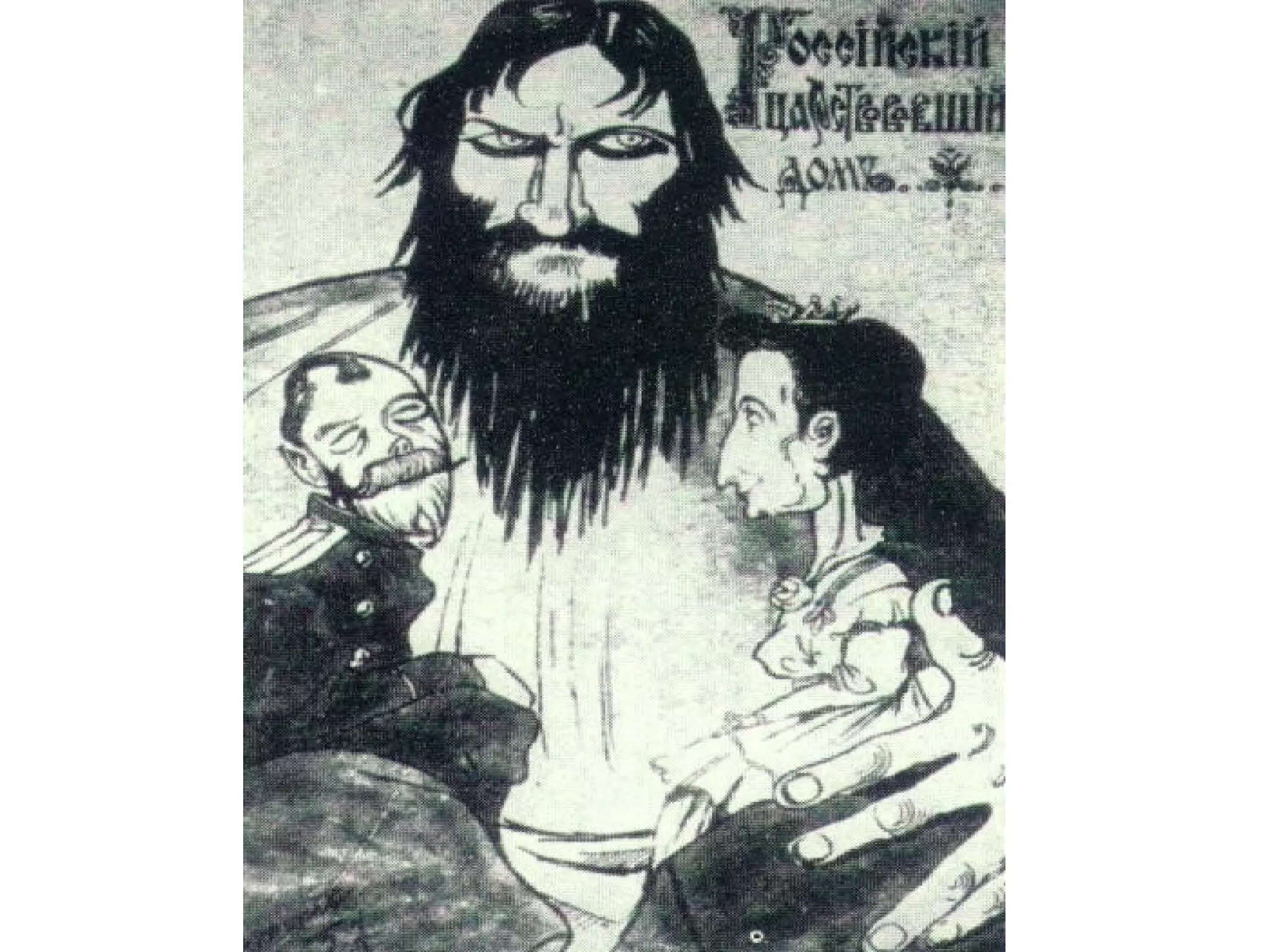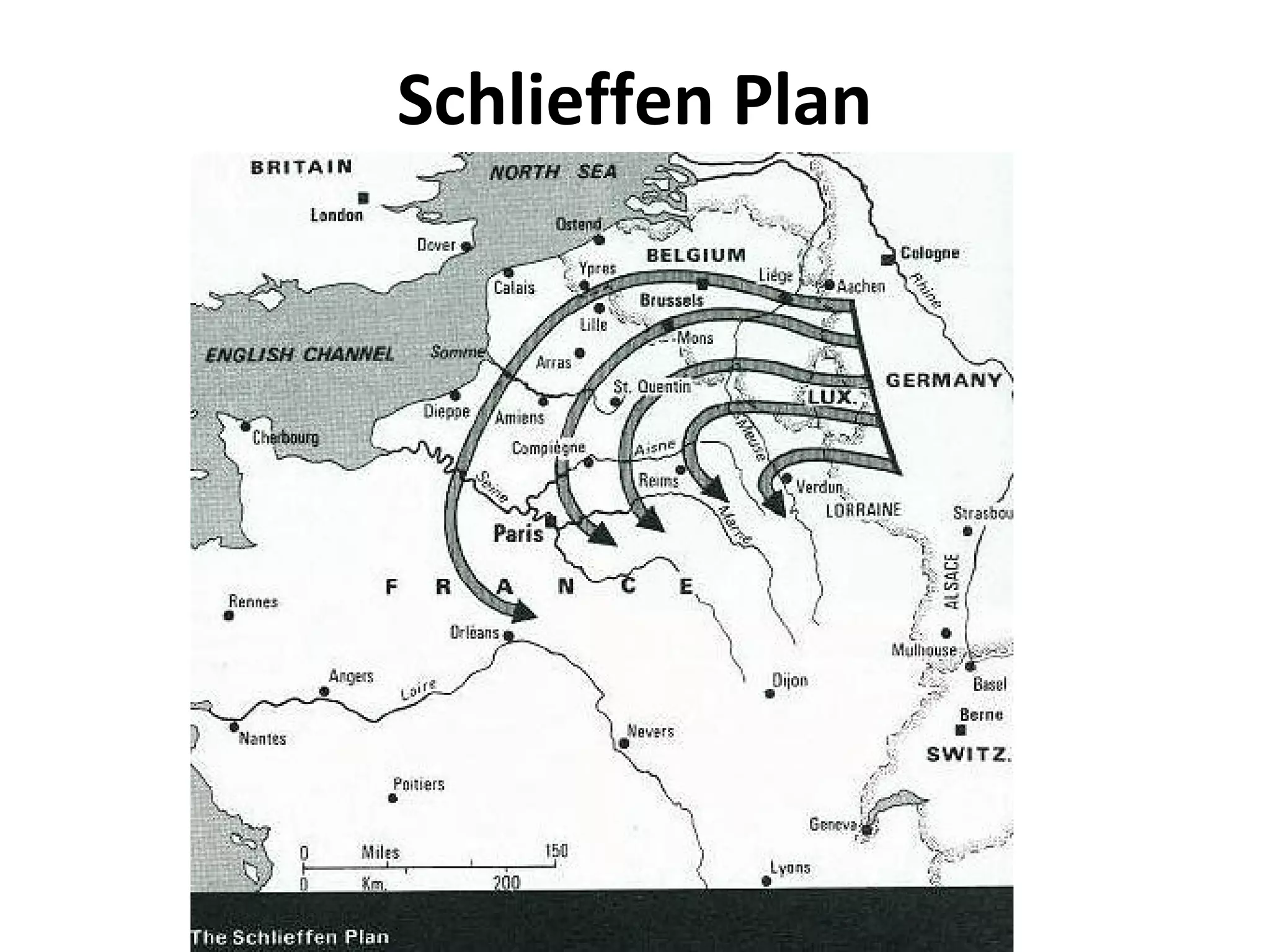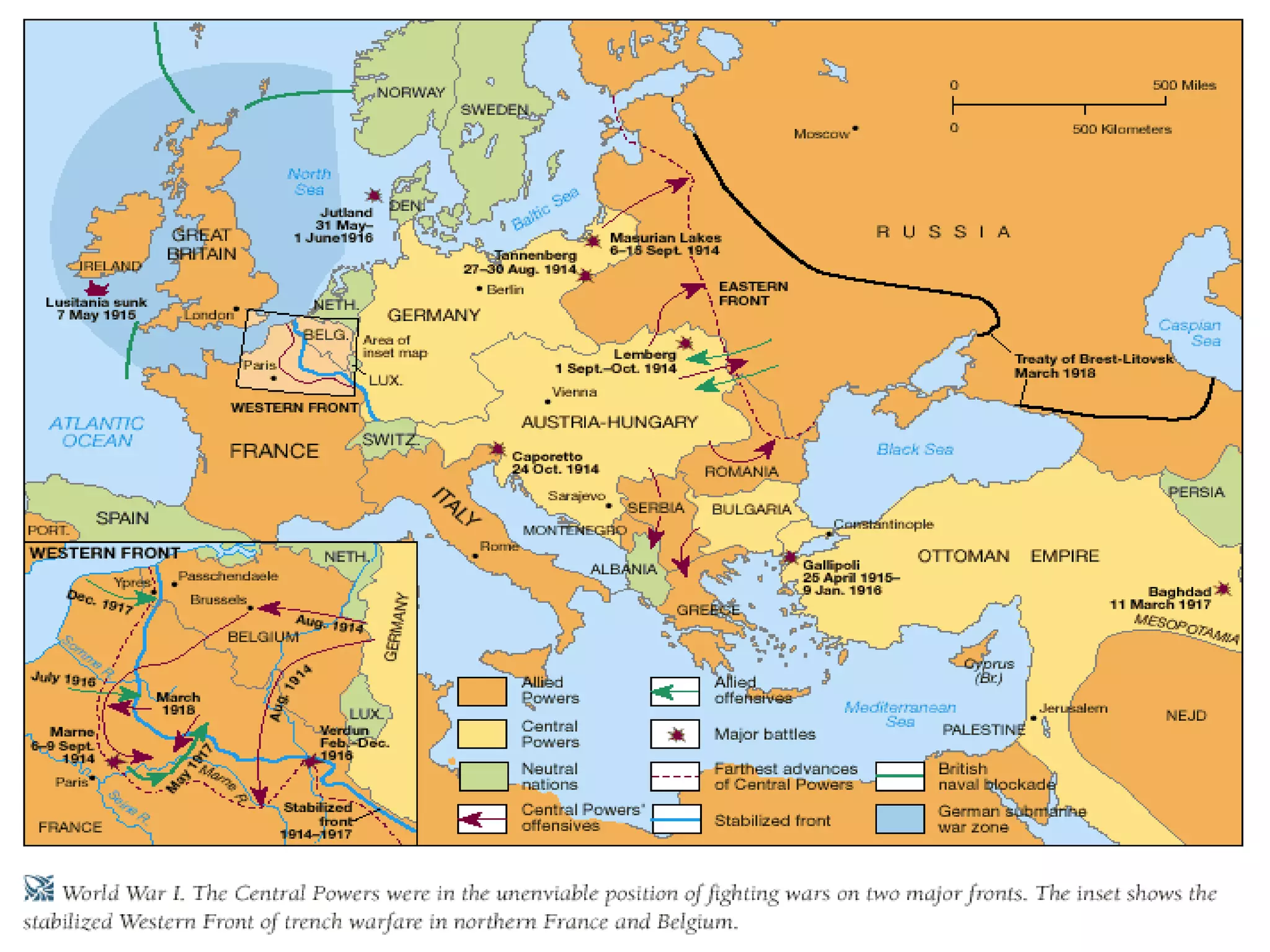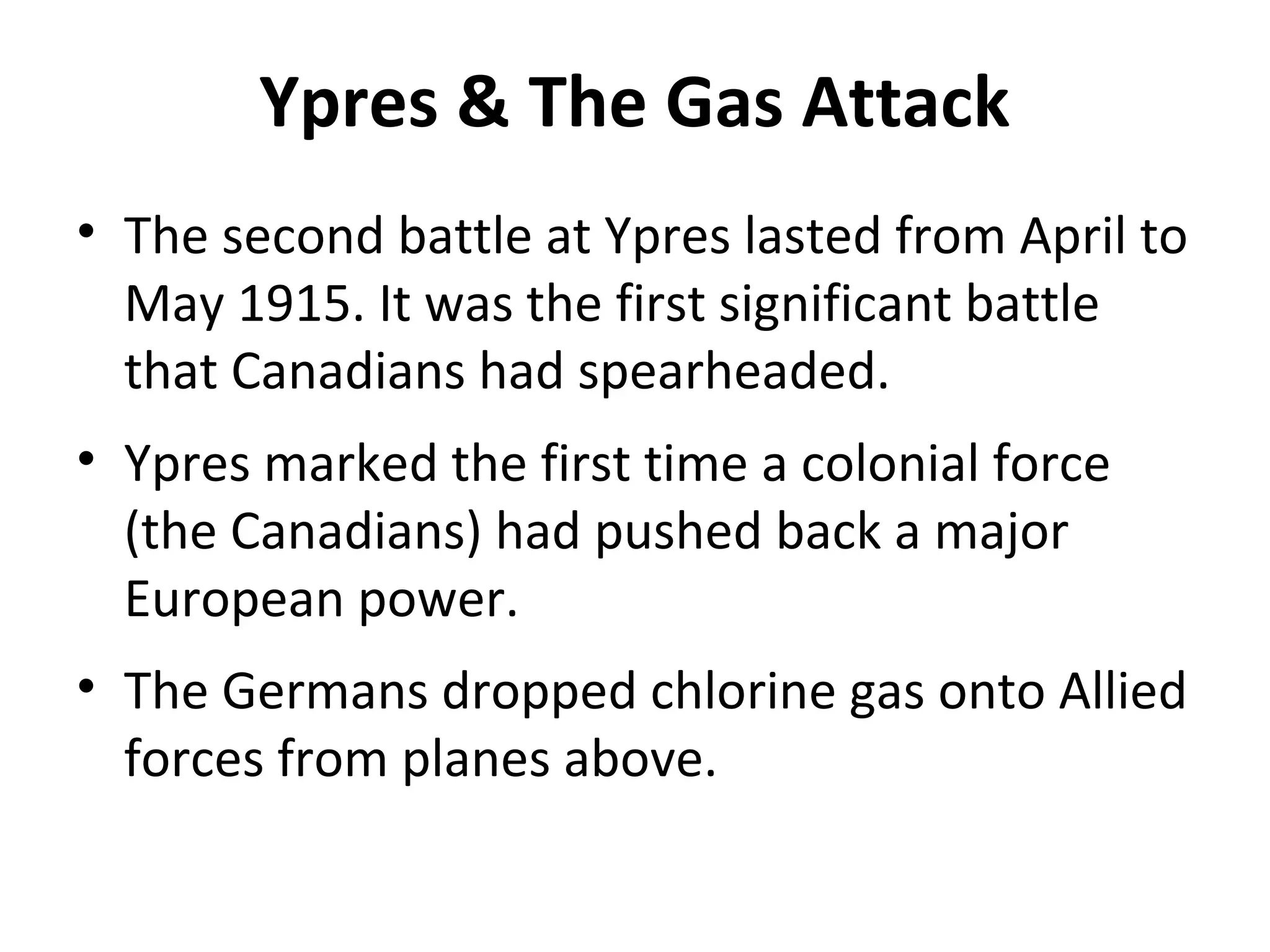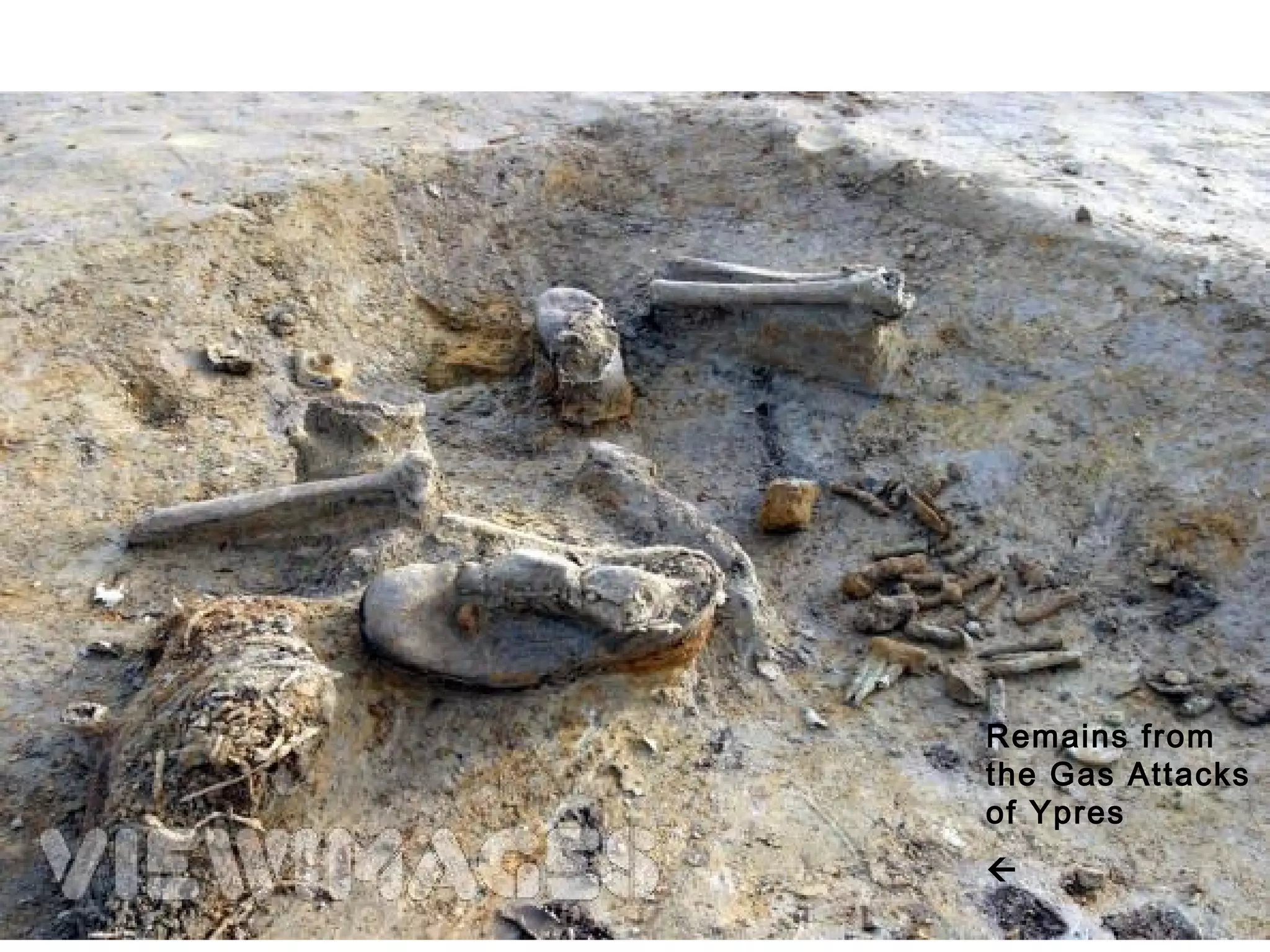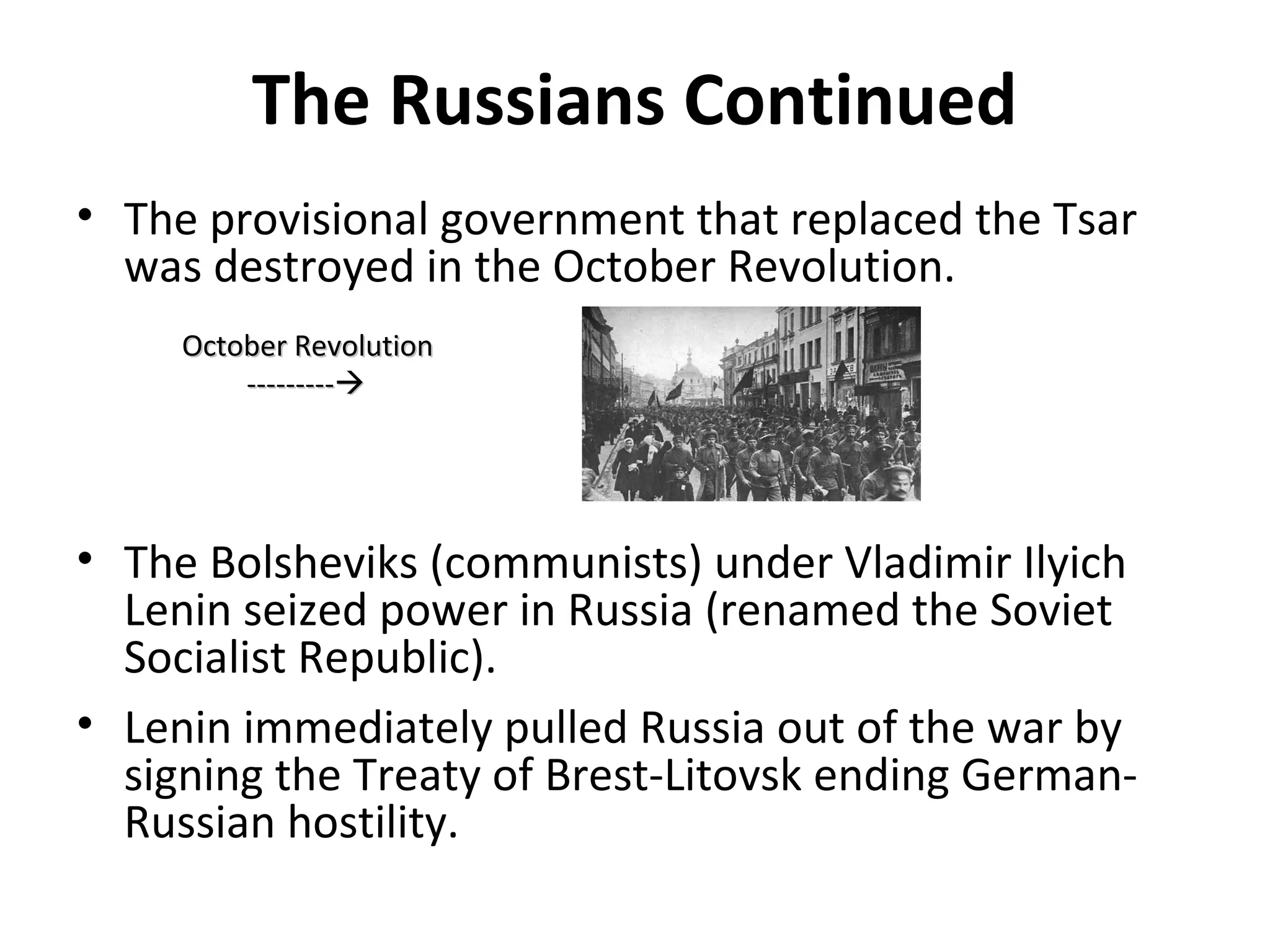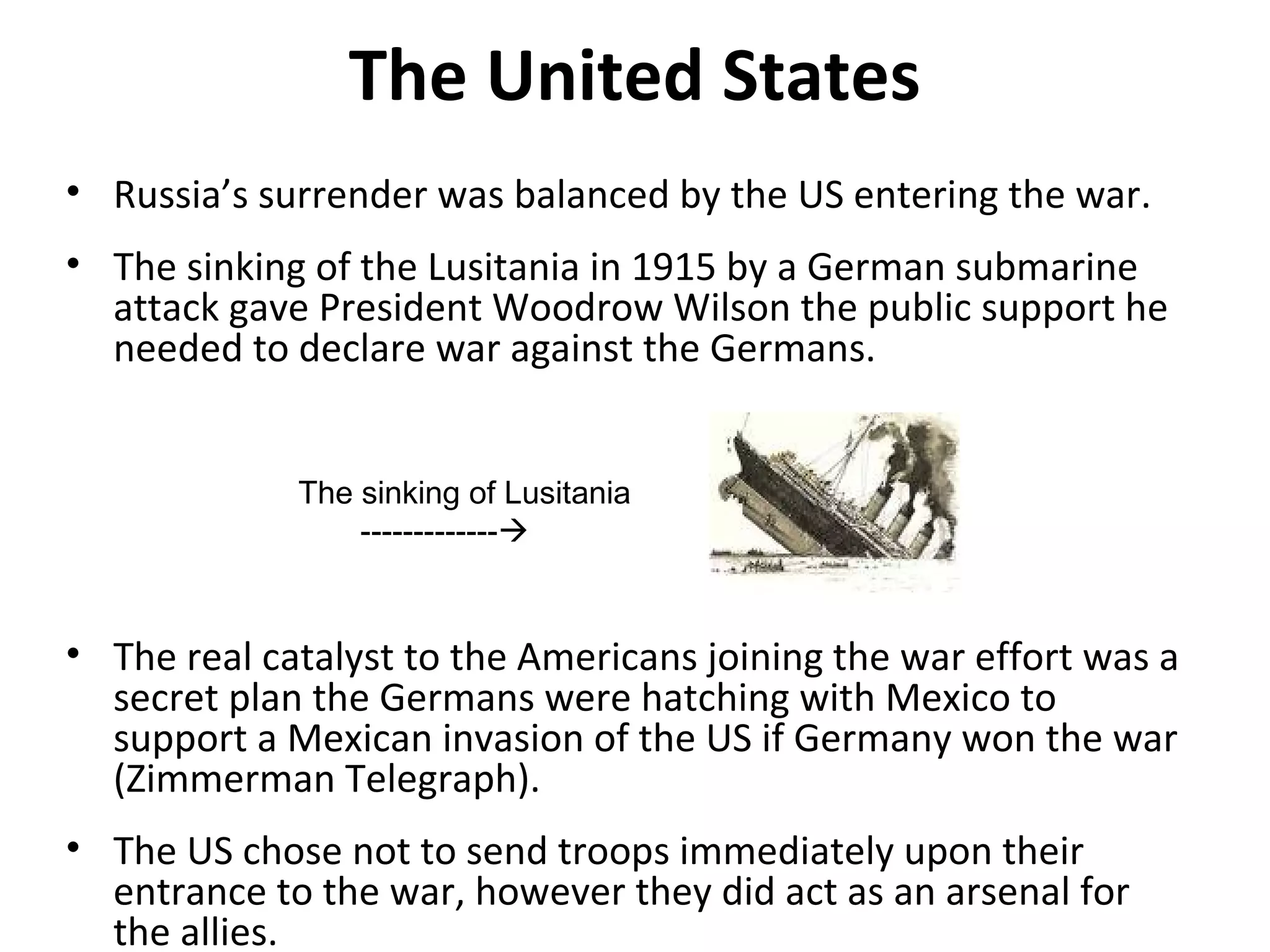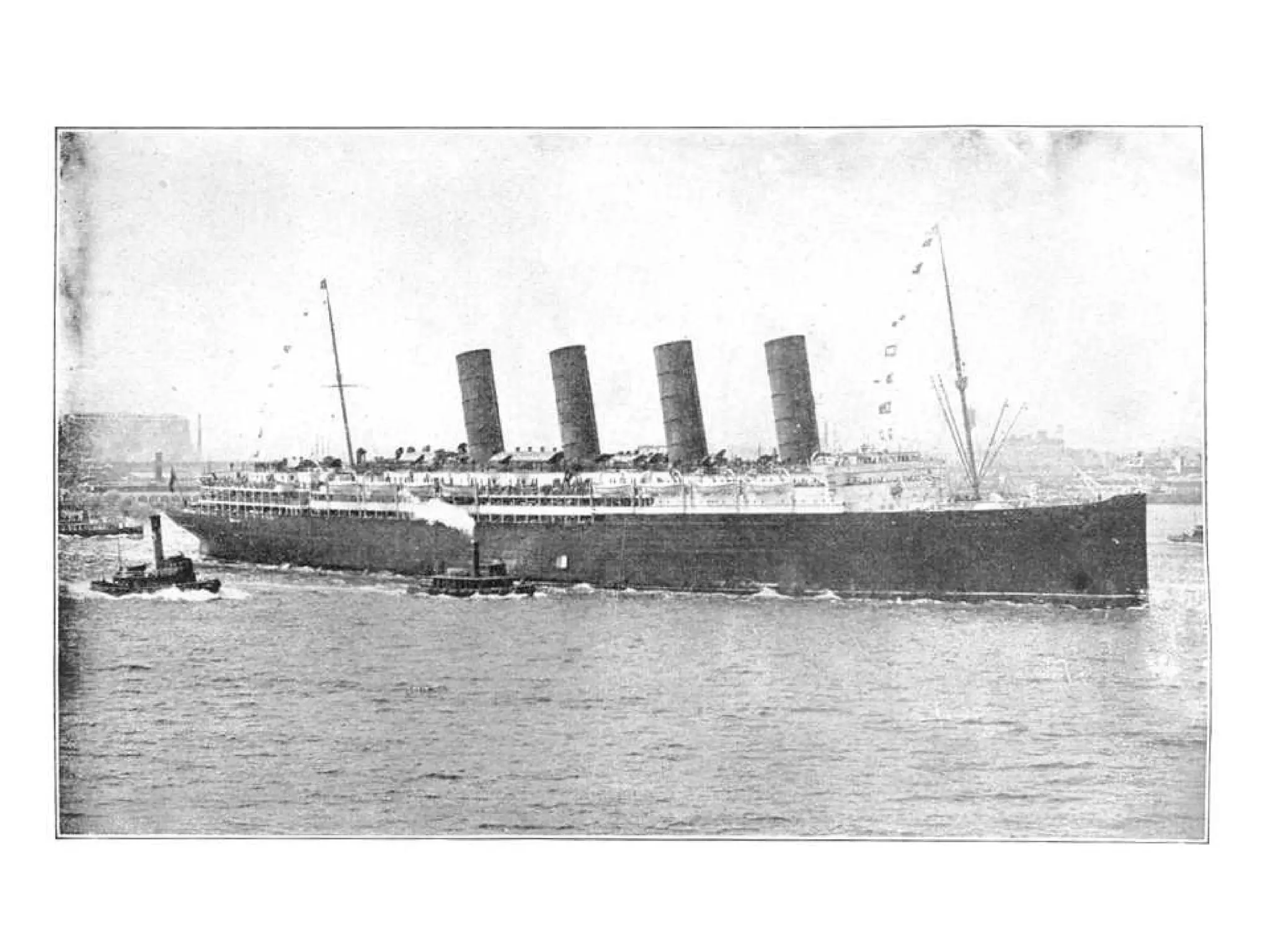The document discusses the rise of the nation state in Europe from the 17th century onward and some of the conflicts that arose from competition between powerful nation states leading up to World War I. It describes how European powers established colonies overseas in pursuit of resources to fuel their industrial growth in the late 19th century. Rising tensions between nation states like Germany, Britain, and Russia contributed to conflicts such as the Franco-Prussian War, Boer Wars, and Russo-Japanese War. Ethnocentric views of cultural and racial superiority also justified colonial expansion. These global rivalries and displays of nationalism set the stage for World War I.









